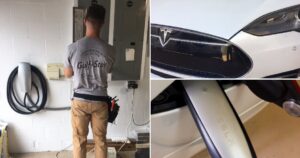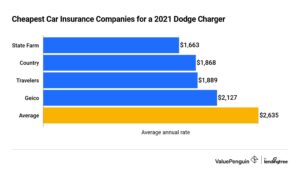Looking for a way to charge your li-ion battery without a charger? You’ve come to the right place! We’ve got a simple and effective solution that will help you power up your battery in no time. Whether you’re in a pinch and can’t find your charger or you’re simply looking for an alternative method, we’ve got you covered. Don’t worry, you won’t need any fancy equipment or technical expertise for this. So, sit back and let’s dive into the world of charging li-ion batteries without a charger.
How to Charge Li-Ion Battery Without a Charger
Lithium-ion (Li-ion) batteries have become the standard power source for many portable electronic devices due to their high energy density and long-lasting performance. However, there may be situations where you find yourself without access to a charger and in need of charging your Li-ion battery. In this article, we will explore various methods and techniques to charge your Li-ion battery without a charger, ensuring you can power up your devices even in challenging situations.
1. Utilizing USB Ports
One of the simplest and most accessible ways to charge a Li-ion battery without a charger is by using USB ports. Many devices, such as laptops, desktop computers, and even gaming consoles, have USB ports that can provide power to other devices. Follow these steps to charge your Li-ion battery using a USB port:
1. Ensure that the device you are connecting to has an active USB port.
2. Turn off your device to avoid any potential issues during the charging process.
3. Connect the USB cable to your device.
4. Identify the positive (+) and negative (-) terminals on your Li-ion battery.
5. Connect the positive terminal to the positive (+) end of the USB cable and the negative terminal to the negative (-) end.
6. Wait for a few moments, and your Li-ion battery should start charging.
Keep in mind that the charging speed may be slower compared to using a dedicated charger, but it can still provide a viable option in emergency situations.
2. Solar Charging
If you find yourself in an outdoor setting with plenty of sunlight, harnessing solar energy to charge your Li-ion battery can be an effective solution. Solar chargers are widely available in the market and come in various sizes and power capacities. Follow these steps to charge your Li-ion battery using a solar charger:
1. Position your solar charger in an area exposed to direct sunlight.
2. Connect the solar charger to the Li-ion battery using the provided cables.
3. Ensure that the positive and negative terminals are correctly aligned.
4. Let the solar charger absorb sunlight and convert it into electrical energy to charge your Li-ion battery.
It’s important to note that solar charging may take longer than using traditional chargers, especially if the weather conditions are not optimal. However, it offers a sustainable and eco-friendly option for charging your Li-ion battery when you’re on the go.
3. Power Banks
Power banks have gained popularity as portable charging solutions for electronic devices. These compact devices store electrical energy and can be used to charge your Li-ion battery on the go. Here’s how you can utilize a power bank to charge your Li-ion battery:
1. Ensure that your power bank is charged and has sufficient energy.
2. Connect the power bank to your Li-ion battery using a compatible USB cable.
3. Make sure the positive and negative terminals are aligned correctly.
4. Turn on the power bank to initiate the charging process.
5. Monitor the power bank’s charge level and disconnect once your Li-ion battery reaches the desired level.
Power banks are versatile and offer a convenient way to charge your Li-ion battery in various situations, such as during travel or when you don’t have access to a traditional charger.
4. Improvised Charging Methods
In dire situations where you don’t have access to any of the aforementioned options, you can resort to improvised charging methods. While they may not be as reliable or efficient, they can provide a temporary solution until you can find a proper charger. Here are a few alternative methods you can consider:
a) Using a 9V Battery:
This method involves using a 9V battery and a makeshift connector to charge your Li-ion battery. Follow these steps:
1. Find a 9V battery and cut off the connector end.
2. Expose the positive and negative wires.
3. Locate the corresponding positive and negative terminals on your Li-ion battery.
4. Connect the positive wire to the positive terminal and the negative wire to the negative terminal.
5. Be cautious and monitor the charging process, as this method can be risky and may cause damage to your Li-ion battery if not performed correctly.
b) Car Battery:
If you’re in a car and in urgent need of charging your Li-ion battery, you can use the car’s battery to provide power. Follow these steps:
1. Turn off the car’s engine before attempting to charge your Li-ion battery.
2. Identify the positive and negative terminals on both the car battery and your Li-ion battery.
3. Connect the positive terminal of the car battery to the positive terminal of your Li-ion battery.
4. Connect the negative terminal of the car battery to the negative terminal of your Li-ion battery.
5. Make sure the connections are secure but avoid any short circuits.
6. Monitor the charging process to prevent overcharging.
It’s important to note that these improvised charging methods should be used as a last resort and with caution. Improper implementation can lead to damage or even safety hazards.
In conclusion, while having a dedicated charger is the most convenient way to charge a Li-ion battery, there are several alternative methods available. Whether it’s utilizing USB ports, solar charging, power banks, or improvised methods, you can keep your devices powered up even when a charger is not readily available. Just remember to exercise caution, monitor the charging process, and ensure the connections are secure to avoid any potential risks. With these techniques at your disposal, you can confidently charge your Li-ion battery without a charger in various circumstances.
How to charge custom lithium ion batteries (without a BMS)
Frequently Asked Questions
Can I charge a li-ion battery without a charger?
Yes, it is possible to charge a li-ion battery without a charger using alternative methods.
What are some alternative methods to charge a li-ion battery without a charger?
There are several alternative methods you can try to charge a li-ion battery without a charger. These include using a USB cable connected to a computer or laptop, utilizing a power bank or portable charger, or even using a DIY charging circuit.
How do I charge a li-ion battery using a USB cable?
To charge a li-ion battery using a USB cable, you will need a USB cable with the appropriate connector for your battery. Simply connect one end of the USB cable to a computer or laptop, and the other end to the battery. Make sure the computer or laptop is powered on. The battery should start charging automatically.
What is a power bank, and how can I use it to charge a li-ion battery?
A power bank is a portable charger that can store electrical energy and later use it to charge devices. To charge a li-ion battery using a power bank, connect the power bank to the battery using a USB cable. Some power banks come with specific ports for different devices, so ensure you use the appropriate cable for your battery. Once connected, the power bank will start charging the battery.
Can I create a DIY charging circuit to charge a li-ion battery without a charger?
Yes, it is possible to create a DIY charging circuit to charge a li-ion battery without a charger. However, this requires technical knowledge and should only be attempted by individuals with expertise in electronics. It involves designing and constructing a circuit that provides the correct voltage and current for the li-ion battery.
Are there any risks involved in charging a li-ion battery without a charger?
Charging a li-ion battery without a charger can involve certain risks if not done properly. It is essential to ensure that the charging method you choose provides the correct voltage and current for the battery and avoids overcharging or overheating. Using improper charging methods can damage the battery or even pose a safety hazard. Therefore, it is recommended to follow manufacturer guidelines or seek professional advice when charging li-ion batteries without a charger.
Final Thoughts
Charging a Li-ion battery without a charger may seem challenging, but it is not impossible. There are alternative methods that can help you recharge your battery in times of need. One option is to use a USB cable to connect your device to a computer or laptop, which can provide a small amount of power to the battery. Another option is to use a portable power bank with a USB port, allowing you to charge your battery on the go. Additionally, some smartphones offer a feature called “USB OTG” that enables them to charge other devices using a USB cable. So, if you find yourself without a charger, remember that there are ways to charge your Li-ion battery without one.



